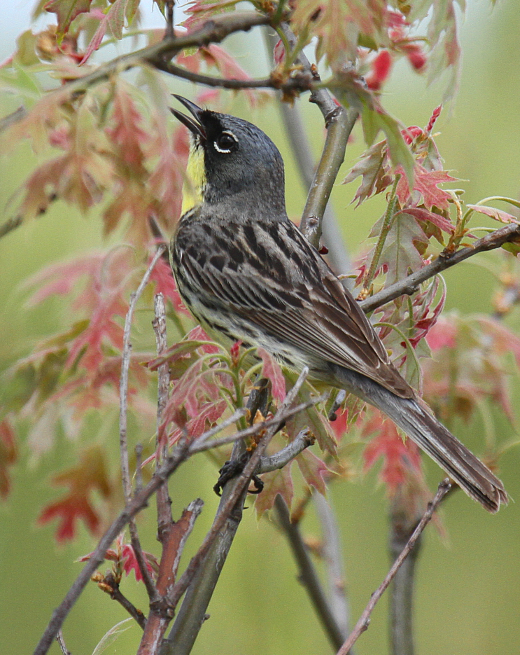
Kirtland’s Warbler. Photo by Nick Anich.
The Kirtland’s Warbler (Setophaga kirtlandii) is one of rarest and most endangered warblers in the world and has always had a shroud of mystery. It was first discovered (rather late for a North American species) in 1851, the first nest was not found until 1903, and its overwintering habitat in the Bahamas was not well-known until recent years. Twice a year, Kirtland’s move to and from their summer and winter homes, passing right through the heavily-settled eastern United States. But even along its regular migration path, only a lucky handful of birders ever have seen the species. Very little is known of the species’ stopover ecology and habitat use in migration, but we hope to help that last mystery be solved. In 2017, we are asking eBirders in three states–Florida, Georgia, and Ohio–to help by participating in our 2017 Kirtland’s Warbler Migration Blitz.
Kirtland’s Warblers have recently been tagged (with light-level geolocators) and that information has given us a better idea for where to focus searches for the species in each of those three states. We are asking birders to sign up and visit some of of Kirtland’s Warbler survey points, conduct a 10-minute point count using an audio tape designed to attract the species, and to submit their observation through eBird. The main goal is to try to identify the primary habitat used by Kirtland’s Warblers on passage.
Three survey periods have been defined, which correspond to the known migration dates from this geolocator data and historical sightings.
Florida: Friday, 14 April to Sunday, 14 May
Georgia: Friday, 21 April to Sunday, 21 May
Ohio: Friday, 5 May to Sunday, 4 June
Check out our Kirtland’s Warbler Migration Blitz page for more information. This page has a link to a sign-up form as well as a link to download the full protocol.
Although finding a Kirtland’s will not be easy, with enough eBirders looking even a couple sightings could really help us learn more about how to protect this species on its migratory passage.
